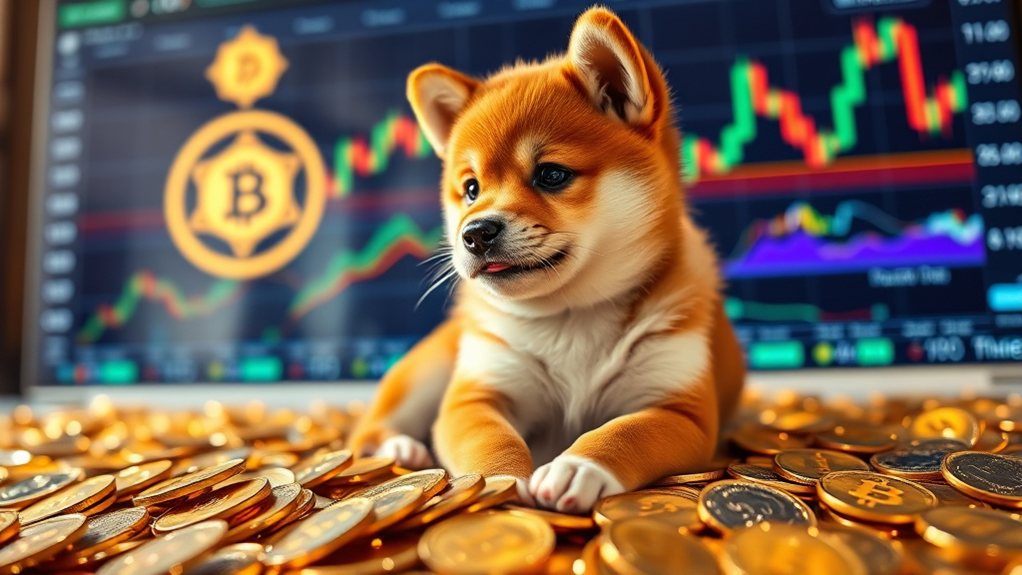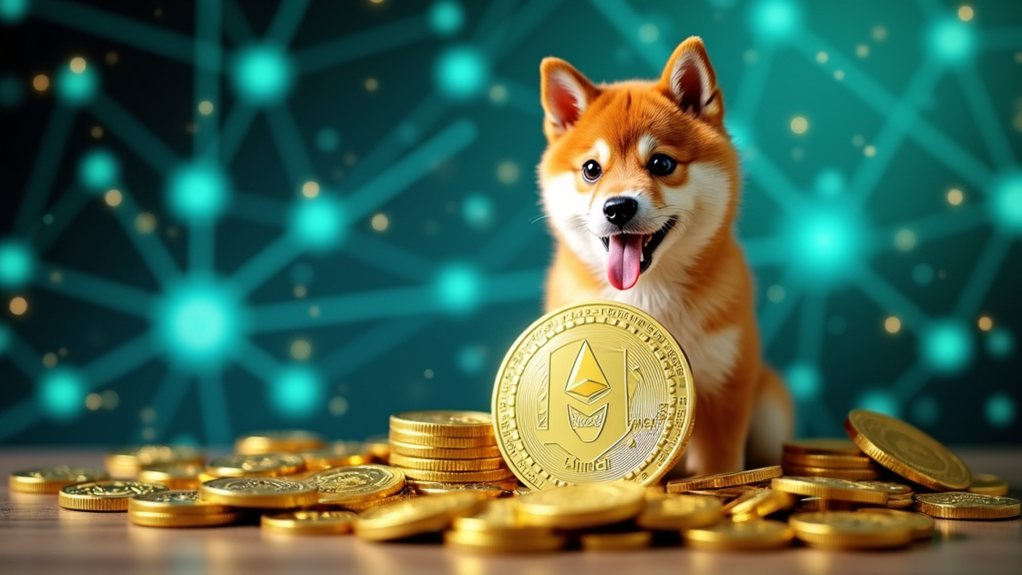Shiba Inu is a cryptocurrency that launched in August 2020 on the Ethereum blockchain. Created by anonymous developer "Ryoshi," it's named after the popular dog breed meme. The ecosystem includes three tokens: SHIB, LEASH, and BONE, plus a decentralized exchange called ShibaSwap. It has a strong community known as the "SHIB Army" and gained fame through celebrity endorsements. The project continues to expand with new developments like Shibarium.

Shiba Inu, often called the "Dogecoin killer," is a cryptocurrency that launched in August 2020 by an anonymous creator known as "Ryoshi." It's built on the Ethereum blockchain as an ERC-20 token and started as an experiment in building a decentralized community. Named after the popular Shiba Inu dog breed that became an internet meme, this cryptocurrency has gained widespread attention for its rapid growth and dedicated following.
Unlike Bitcoin, which uses a proof-of-work system, Shiba Inu uses a proof-of-stake consensus mechanism. The token was created with a massive initial supply of one quadrillion tokens. Importantly, the creator sent 50% of all SHIB tokens to a liquidity pool on Uniswap, a decentralized exchange. This strategy helped create a market where the token could be freely traded. Shiba Inu has deflationary tokenomics, meaning its supply decreases over time through token burning.
While Bitcoin relies on energy-intensive proof-of-work, Shiba Inu's proof-of-stake approach and deflationary tokenomics create a more sustainable ecosystem.
The Shiba Inu ecosystem consists of multiple components. The main token, SHIB, is used for transactions and staking. There's also LEASH, a limited supply token for rewards, and BONE, which serves as a governance token allowing holders to vote on proposals. ShibaSwap is the project's decentralized exchange where users can trade these ecosystem tokens. A newer development called Shibarium aims to be a layer-2 solution to help reduce transaction fees. In August 2023, the project officially launched Shibarium layer-2 blockchain to enhance scalability and efficiency while maintaining connection to Ethereum for security. Initially created as a memecoin parody of Dogecoin, Shiba Inu has evolved into a sophisticated ecosystem with practical applications.
One of Shiba Inu's strongest assets is its community, often called the "SHIB Army." This large and active group of supporters has driven the project's growth through social media. The cryptocurrency has received attention from celebrities like Elon Musk, which helped boost its popularity. The project's dog theme and meme culture have been central to its marketing and appeal. The token's price surged dramatically when Elon Musk acquired a Shiba Inu puppy, creating substantial market excitement.
Shiba Inu has various use cases. Some merchants accept it as payment for goods and services. Users can stake their tokens to earn passive income. SHIB holders can also participate in governance through the Shiba DAO. The platform supports NFT creation and trading through ShibaSwap.
The token reached its all-time high price of $0.00008845 in October 2021, with its market cap exceeding $40 billion. Like most cryptocurrencies, Shiba Inu experiences high price volatility. It typically follows broader crypto market trends and has maintained a position among the top 20 cryptocurrencies by market capitalization.
Looking ahead, the Shiba Inu team is working on several developments. These include the Shibarium mainnet launch to improve scalability, a metaverse project, expanding ShibaSwap features, and increasing real-world utility. The community continues to drive the project's evolution and growth in the competitive cryptocurrency market.
Frequently Asked Questions
How Do I Safely Store My Shiba Inu Coins?
Shiba Inu coins can be stored in several types of wallets.
Hardware wallets provide the highest security by keeping private keys offline on devices like Ledger or Trezor.
Software wallets offer convenience through mobile or desktop apps.
Paper wallets store keys physically on printed documents.
Exchange wallets are available on platforms like Binance, but they're considered less secure for long-term storage.
What Makes Shiba Inu Different From Other Meme Coins?
Shiba Inu differs from other meme coins through its multi-token ecosystem with SHIB, LEASH, and BONE serving different functions.
It's backed by a strong community-driven governance system where "ShibArmy" members vote on proposals.
Unlike most meme coins, Shiba Inu offers practical utilities including ShibaSwap for trading, staking rewards, and an NFT marketplace.
The project's Shibarium layer-2 solution enables faster, cheaper transactions for real-world applications.
Can Shiba Inu's Price Reach $0.01?
SHIB reaching $0.01 is mathematically improbable given current conditions.
It would require a 124,900% price increase, creating a $5.89 trillion market cap—nearly triple the entire crypto market.
Most experts consider it unrealistic without burning 99% of tokens.
While SHIB has shown volatility, the required growth exceeds any historical asset performance.
Some analysts suggest $0.0001-$0.001 as more feasible long-term targets.
How Does Shiba Inu's Governance System Work?
Shiba Inu's governance system operates through its multi-token structure. BONE token holders have primary voting power, allowing them to propose and vote on ecosystem changes.
Shibizens (SHIB holders) participate in community decision-making with equal voice. The Shib Branch oversees proposal implementations.
Two specialized councils focus on charity and cultural initiatives. Voting weight depends on token ownership, creating a decentralized system that's moving toward Layer-2 solutions for better scalability.
What Are the Environmental Impacts of Shiba Inu Mining?
Shiba Inu doesn't require traditional mining. The token runs on Ethereum's network, which switched to proof-of-stake in 2022, reducing energy use by 99.9%.
This means SHIB's environmental impact is minimal compared to proof-of-work cryptocurrencies like Bitcoin. The SHIB ecosystem, including ShibaSwap, does use some energy for operations, but it's relatively small.
The community is also exploring carbon offset initiatives and eco-friendly blockchain solutions.










